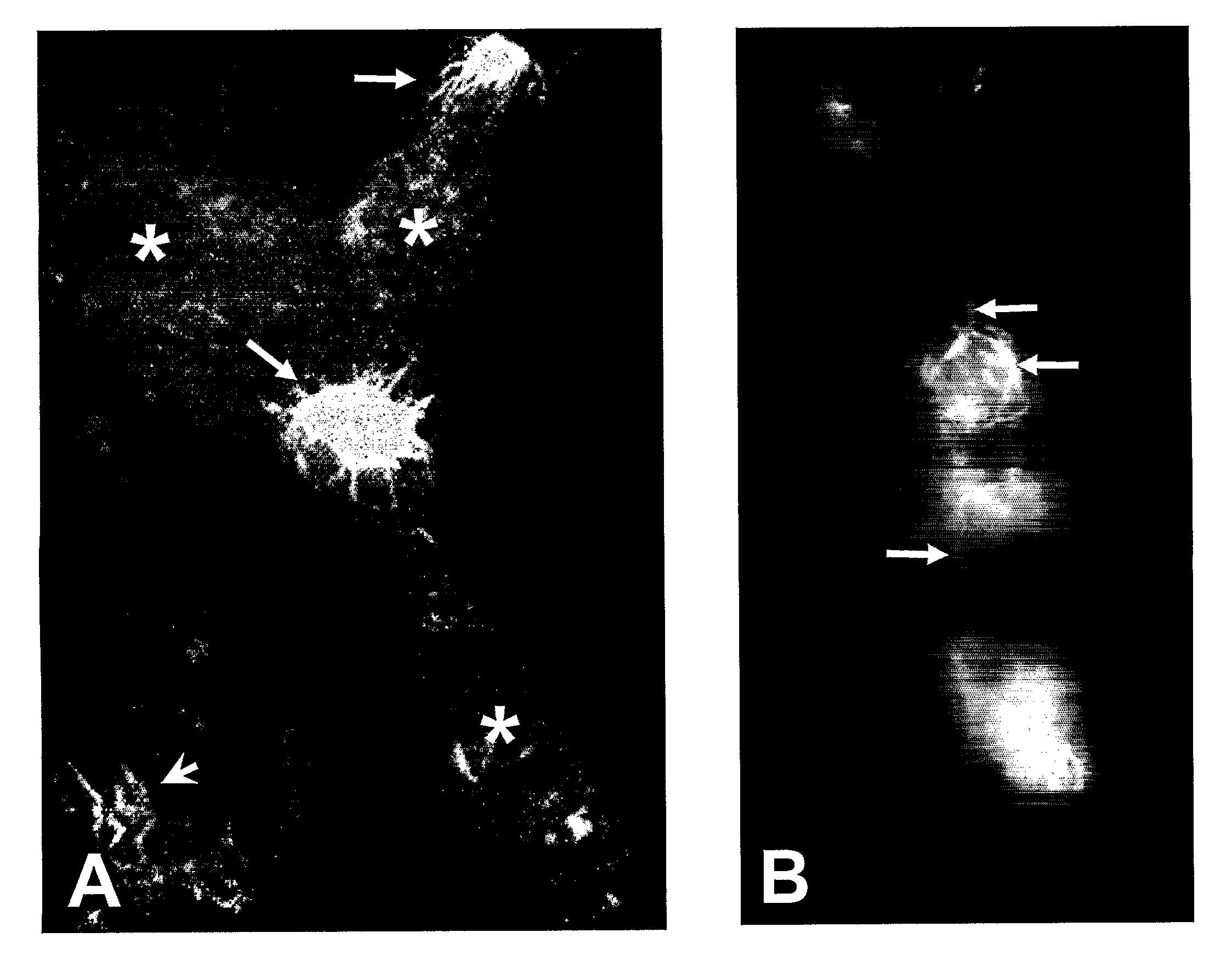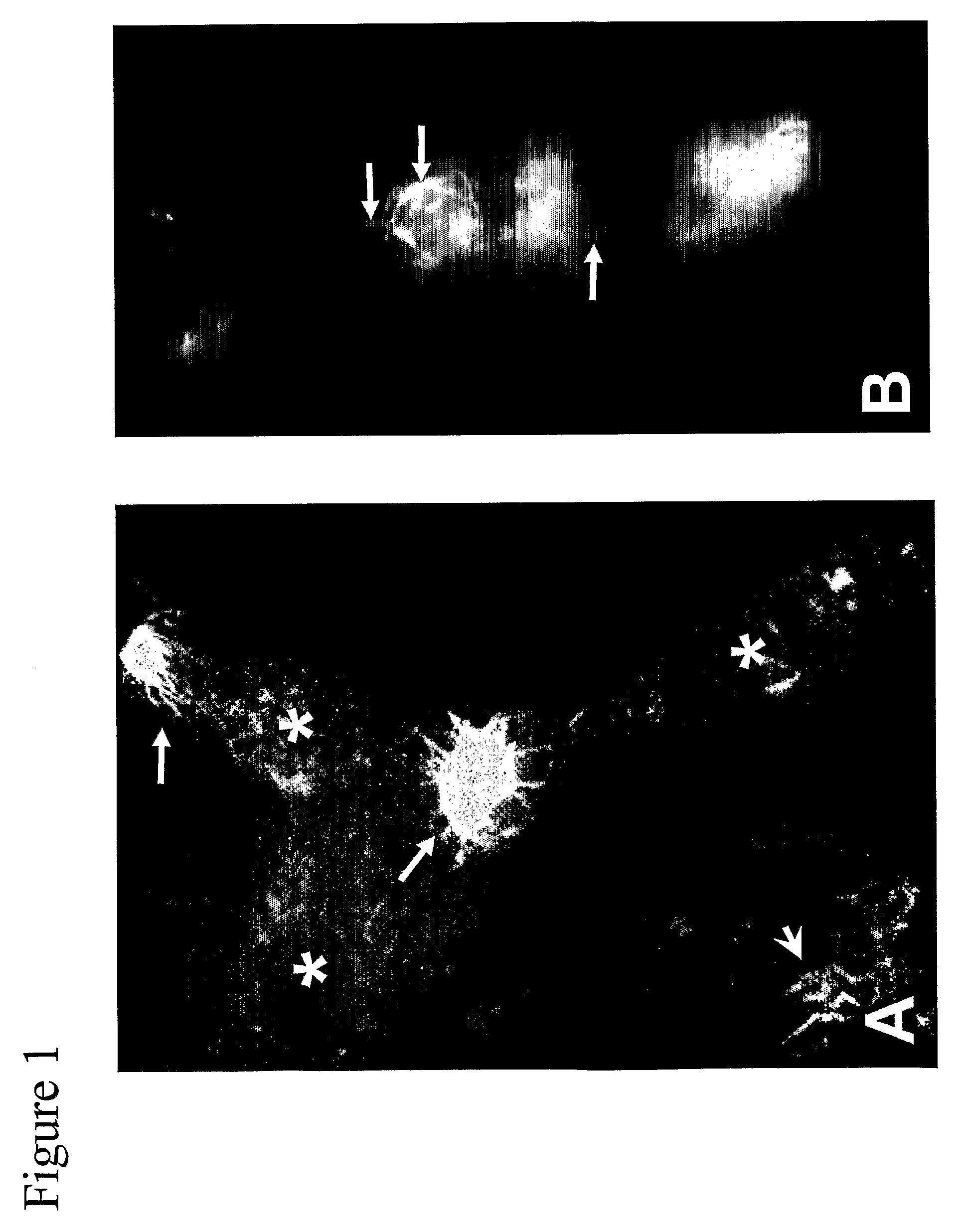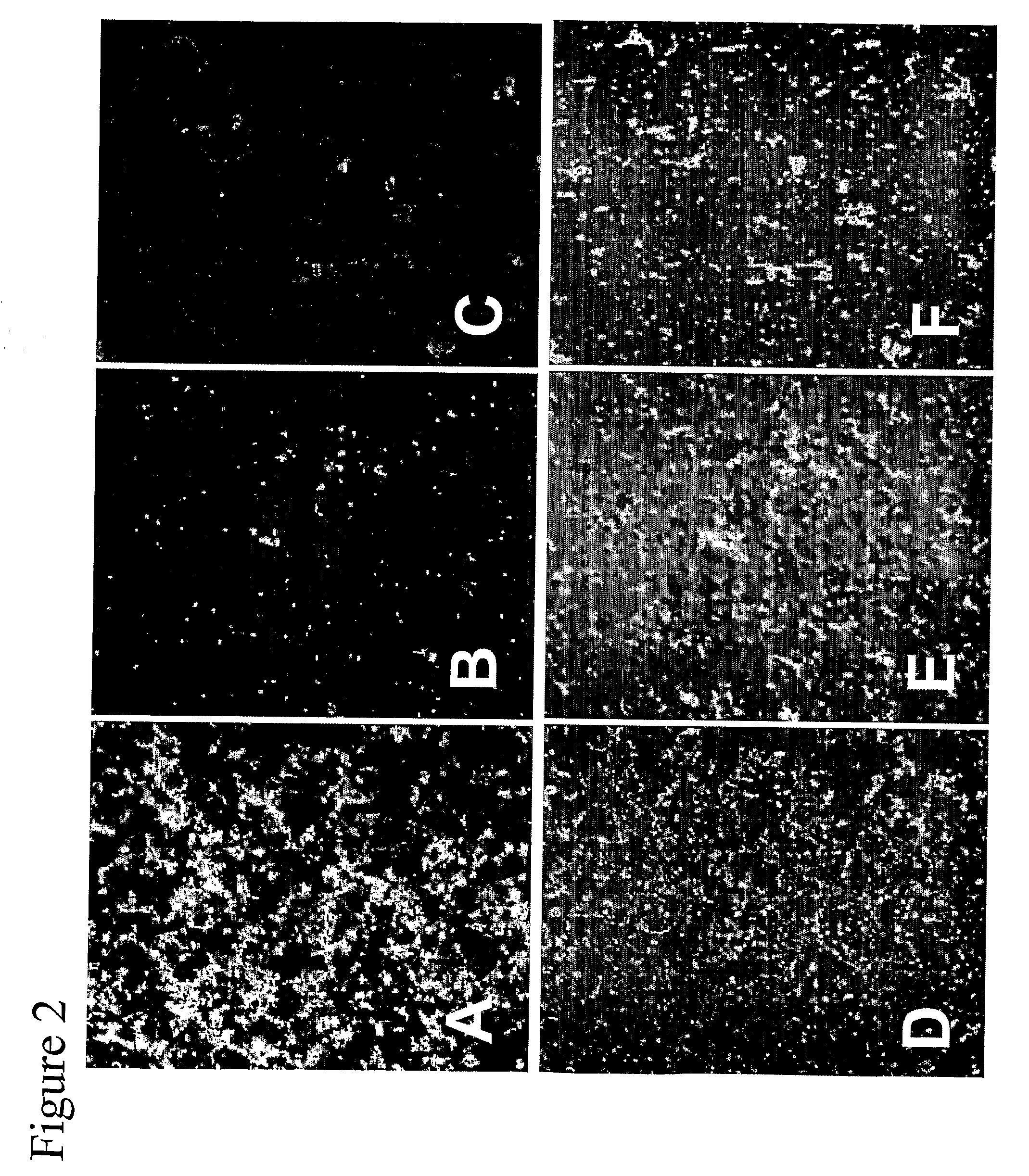Microglia Facilitated Amyloidogenesis Assay
a technology of amyloidogenesis and microglia, which is applied in the field of microglia facilitating amyloidogenesis assay, can solve the problems of increasing cognition problems, affecting daily activities, and dementia in older people, and achieve the effect of preventing the increase in the severity of symptoms
- Summary
- Abstract
- Description
- Claims
- Application Information
AI Technical Summary
Benefits of technology
Problems solved by technology
Method used
Image
Examples
example 1
Preparation of Rat Primary Microglia
[0076]To obtain rat brain primary microglia, 1-3 day old or newly born Sprague-Dawley rats were used. These rats were decapitated with large scissors. The heads were stored in Dulbeccos phosphate buffered saline (DPBS) obtained from Sigma of St. Louis, Mo. (catalog no. D8537) and placed in 150 mm dishes. The heads were then cut open to expose the brains, which were removed with forceps, and stored in freshly prepared DPBS.
[0077]Meninges were removed from both hemispheres of the newly prepared rat brains. The cerebellum and brainstem were also removed. Once the brains were cleared of meninges, the remaining hemispheres were stored in DPBS, and placed in 100 mm dishes obtained from Corning, Inc. of Corning, N.Y. The remaining hemispheres were minced with a sterile scalpel blade or a sterile single edge razor. 1 ml of trypsin stock at 10 mg / ml, obtained from Sigma of St. Louis, Mo. (catalog no. T-7309), was then added to the minced brain samples. The...
example 2
Preparation of Mouse Peritoneal Macrophage
[0081]To obtain mouse peritoneal macrophages, mice were injected intravenously with 1 ml of 6% casein, obtained from Sigma of St. Louis, Mo. (catalog no. C8654). Four days after injection, the mice were sacrificed via CO2 asphyxiation, and their stomachs washed with 70% ethanol. Incisions were made at the base of the abdomen and the skin was pulled away from the abdominal area. Each mouse was injected with 15 ml of sterile DPBS mixed with 1% FBS at the peritoneal cavity and the injected media was mixed gently. The fluid was then removed using a 10 ml syringe and stored on ice. The fluid samples were collected and centrifuged at 1000 rpm, for 5 minutes. The pellets were resuspended in Macrophage Serum Free Media (MSFM) obtained from Invitrogen of Carlsbad, Calif. and plated at a concentration of 200,000 cells per well in 96 well black / clear plates. Cells were incubated for 4-5 hours to allow the macrophage to attach to the plates. Medium was ...
example 3
Preparation of Human Monocytes
[0082]To prepare human monocytes, 100 ml of blood was collected from a donor using a syringe containing 1.5 ml of heparin (30 Units / ml). The blood was diluted with 20 ml of Macrophage Serum Free Media (MSFM) obtained from Invitrogen of Carlsbad, Calif. (catalog no. 12065) (with 0.1% penicillin / streptomycin). 30 ml of diluted blood was plated over 15 ml of Lymphocyte Separation Media (LSM) obtained from ICN Biomedical Inc. of Costa Mesa, Calif. After centrifugation for 30 min at 1,400 rpm at room temperature, the mononuclear layer was at the plasma ficoll / hypaque interface.
[0083]Most of the upper layer was removed by vacuum without disturbing the monolayer. The monolayer was then removed and placed into a 50 ml conical tube containing 15 ml of LSM. After all layers were removed, the final volume was adjusted to 50 ml. The tubes were centrifuged for 8 min at 1,400 rpm and the supernatant was removed. The cells were then suspended in MSFM and washed twice....
PUM
| Property | Measurement | Unit |
|---|---|---|
| molecular weight | aaaaa | aaaaa |
| total volume | aaaaa | aaaaa |
| volume | aaaaa | aaaaa |
Abstract
Description
Claims
Application Information
 Login to View More
Login to View More - R&D
- Intellectual Property
- Life Sciences
- Materials
- Tech Scout
- Unparalleled Data Quality
- Higher Quality Content
- 60% Fewer Hallucinations
Browse by: Latest US Patents, China's latest patents, Technical Efficacy Thesaurus, Application Domain, Technology Topic, Popular Technical Reports.
© 2025 PatSnap. All rights reserved.Legal|Privacy policy|Modern Slavery Act Transparency Statement|Sitemap|About US| Contact US: help@patsnap.com



